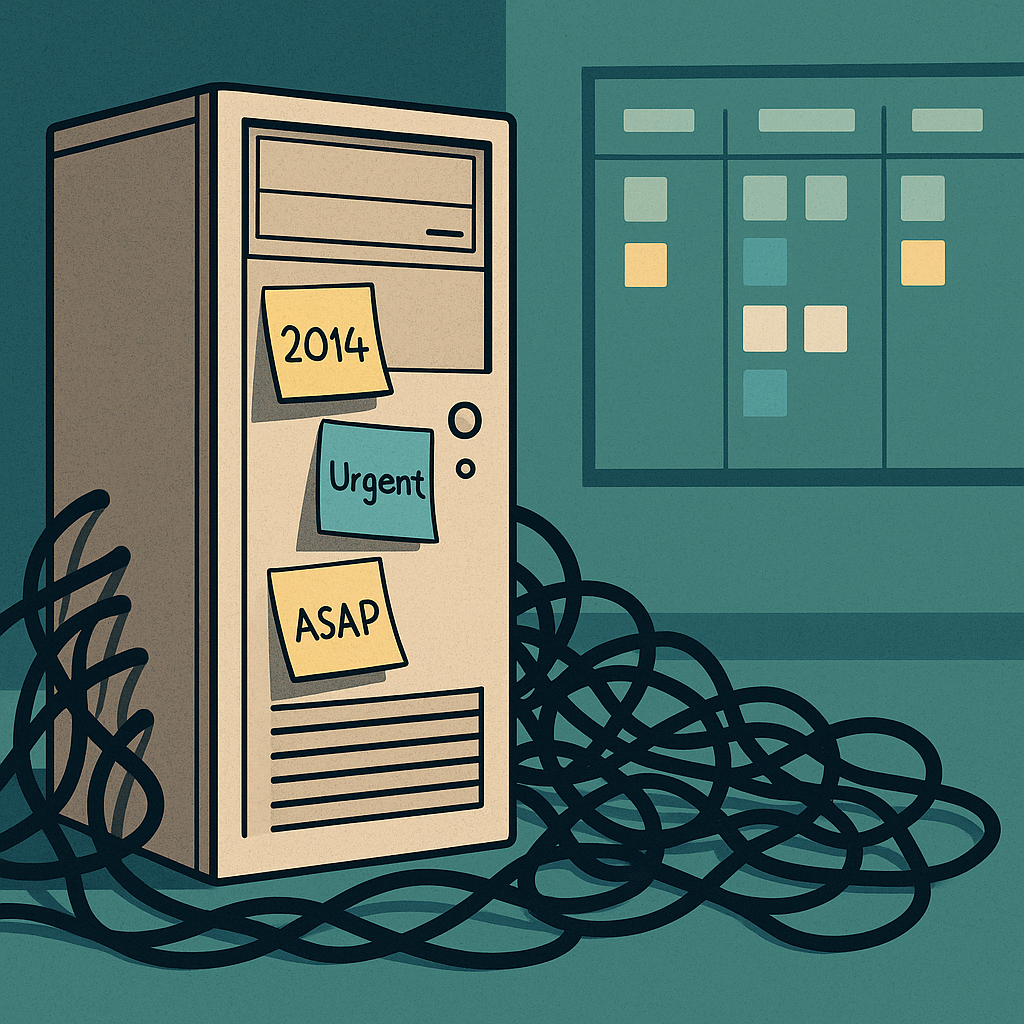There’s a weird thing our brains do.
We make a decision in a moment of stress, fear, or uncertainty and then never revisit it. We move on, get promoted, build teams, launch new frameworks… but that one decision we made back in 2014? Still running in the background like a forgotten Chrome tab eating 78% of our memory.
I call it old code.
And it’s everywhere.
That team that still runs two-hour status meetings “just in case”
Old code. Written during a fire drill when leadership panicked.
Never deleted.
That manager who micromanages every deliverable
Old code. Installed after they got burned by a teammate once in 2017.
Still running.
That product owner who can’t say no to stakeholders
Old code. Origin: early-career people-pleasing + a boss who weaponized “collaboration.”
And if we’re being honest?
You’ve probably got some old code running too.
My old code?
I once decided that being helpful equals being valuable.
So I’d overextend, over-explain, and overcommit, just to prove I belonged in the room.
Helpful, yes. Healthy? Not even close.
At the time, that decision served me.
But eventually, it controlled me.
That’s what old code does.
It solves for a threat that no longer exists, using logic that’s no longer true.
And in agile environments?
It’s poison.
It makes retrospectives feel like Groundhog Day.
It keeps teams reactive instead of reflective.
It locks leaders into default settings. These settings once worked when the org was smaller, scrappier, or in crisis mode. Now, they just create drag.
Signs your team is running old code:
- You’re solving problems that aren’t real anymore.Still doing “risk mitigation” steps for a vendor you haven’t used since the Obama administration?
- Your process doesn’t match your purpose.You’re agile, but still gatekeeping with three approval layers and a form no one understands.
- People fear change even when they hate the current state.They’ve just learned to survive it. Old code loves inertia.
So what do we do?
You refactor. Not just your process. Your beliefs.
- Ask: What decision did I make during a hard season that I’ve never gone back to evaluate?
- Ask your team: What behaviors made sense when we were smaller/startup/panicking but are just habits now?
- Create space for people to say: “That’s legacy thinking. We don’t need it anymore.”
Agility isn’t just iteration. It’s liberation.
From the stuff that once helped us survive but now keeps us small.
You don’t need a rebrand.
You don’t need another pilot.
You just need to kill the code that’s been quietly running your org for years.
And if you’re not sure what it is?
Just look for the thing that makes everyone say,
“Well, that’s how we’ve always done it.”
Then smile, say thanks…
…and hit delete.

